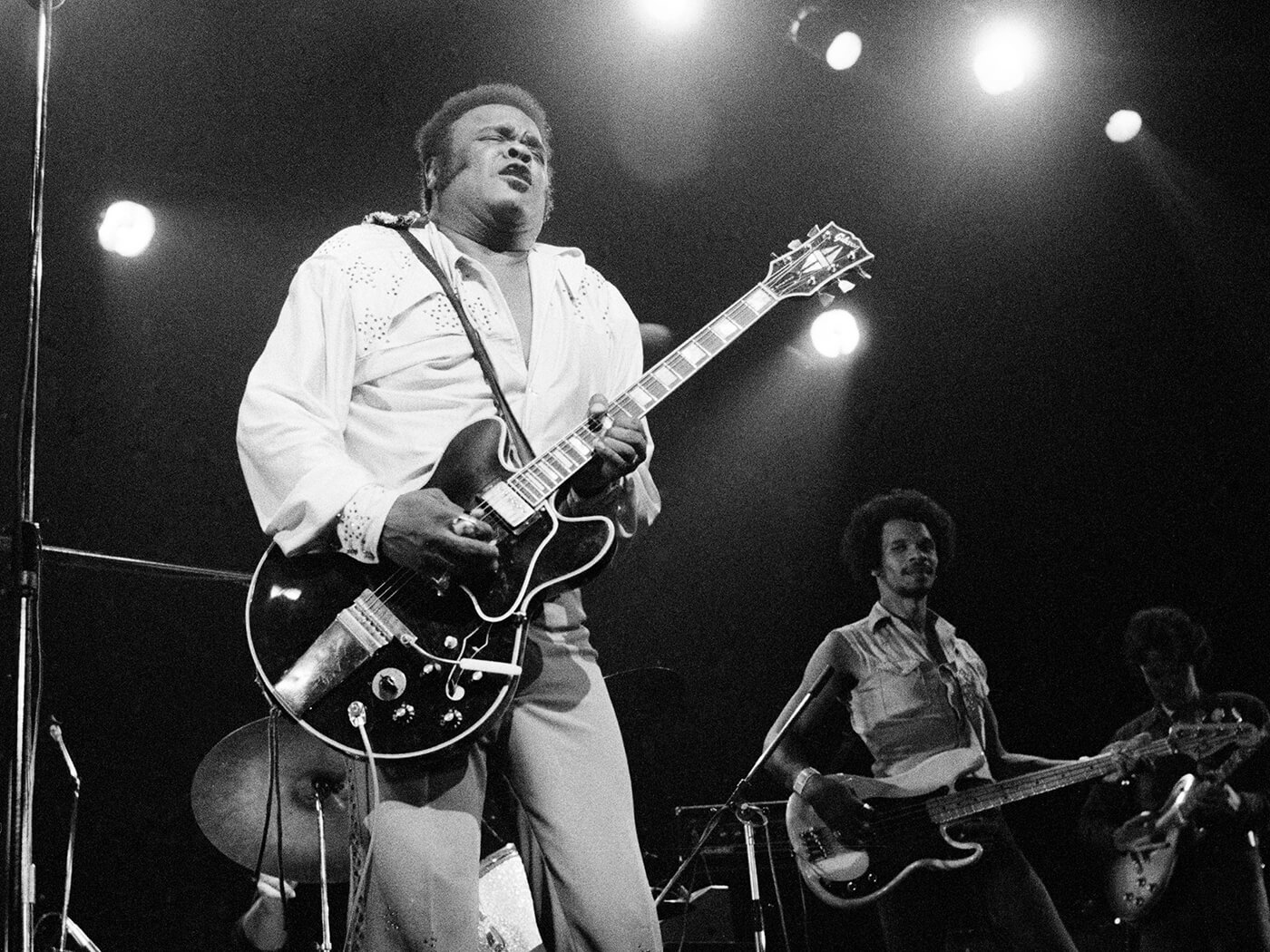Related Tags
How to play blues like Freddie King
In our final part of our look at the stylings of the legendary Three Kings, we tackle the searing style of Freddie King.

Freddie King. Image: Michael Putland / Getty Images
Freddie King was born and raised in Dallas but his true guitar awakening came in 1949 when his family moved to Chicago, and he was exposed to the spellbinding guitar styles of Muddy Waters, T-Bone Walker and Howlin’ Wolf in the city’s South Side nightclubs.
While still a teenager Freddie began playing as a sideman in the city’s famous blues clubs and by the mid-50s he was striking out on his own. Rejected by the Chess Records and the East Side blues scene for his perceived vocal similarity to BB King, Freddie decided to decamp to Chicago’s burgeoning West Side scene in the late 50s, and the rest was history.
Becoming a star name with the West Side’s upstart Cobra Records, Freddie’s fusion of the more sedate Texas blues sound with the raw Chicago style set him apart from the crowd and gave his music a fresher and more kinetic feel than his peers, as evidenced on iconic tracks such as Hide Away and Have You Ever Loved a Woman.
It was this fresh, contemporary field that helped make Freddie one of the most influential figures on the British blues explosion of the 1960s, with Eric Clapton, Peter Green, Jeff Beck and Mick Taylor all citing him as a huge influence, as did fellow Texan Stevie Ray Vaughan later on. Let’s dive in…
Lick 1

This first lick showcases Freddie’s use of string bends. This is a stylistic element of his playing that you can also hear passed down through Clapton and SRV. Using the second shape of the D minor pentatonic you’re doing a series of four string bends in a row on the E string. The first bend is a full tone, the following three are all quarter tones. Notice how the lick starts right before the one beat. There is a slight push on the licks intro.
Lick 2

This lick is a first shape pentatonic lick that shows a typical Freddie King style descend. Starting with a big string bend on the B string with gratuitous amounts of vibrato to make it sing. The final phrase is a speedy four-note run. Freddie didn’t often play fast, but when he did, he would put in these little flurries of notes that you can also hear crop up in Peter Green’s playing.
Lick 3

Freddie had a very vocal guitar style. He often thought in short phrases and used space to his advantage. This lick is made up of a few phrases and also uses the backing rhythm to mimic certain rhythmic hooks in the lead line. It moves between the second and first shapes of the pentatonic scale and contains lots of Freddie King’s trademark pre-bend releases.
Lick 4

The fourth lick opens with more pre-bend releases. When you play these, pick them hard and try to make them really sing like Freddie would. His playing often sounded almost pained and he attacked the guitar with a lot of passion. You’ll notice by listening to the online recorded example of this track that the notes are very snappy. Pick hard to get this attack in all the notes you play.
Lick 5

The opening bending phrase goes back and forth between two notes on alternating quarter and eighth notes. This gives the bar a little swing. There is a descend to the fifth Pentatonic shape before hitting the root note on the D string again. This is a technique many players including ZZ Top‘s Billy Gibbons have used over the years. Apply lots of vibrato to the sustained notes and make sure the final bend really sings. Pick it hard and drag the bend to its peak.
Try It Yourself
Each of these licks are in the key of D Minor, but because they are all pentatonic based, you can transpose them very quickly to any other key you wish. These licks will not only give you some instant Freddie King vibe, but you’ll also be able to see where Freddie’s was passed down to all the British Blues greats of the 1960s.
About the Author
Leigh Fuge is a guitar teacher and professional musician from Swansea, UK. He has taught hundreds of students face to face and via the MGR Music platform. He has more than 10 years of experience working as a touring musician, session guitarist and teacher. Visit mgrmusic.com to find out about guitar tutors in your area.
